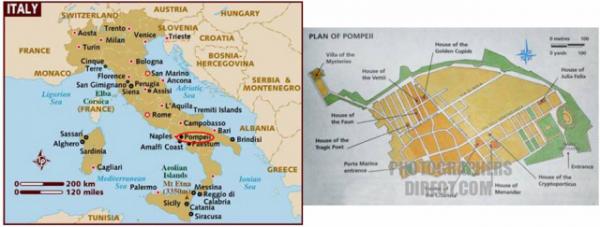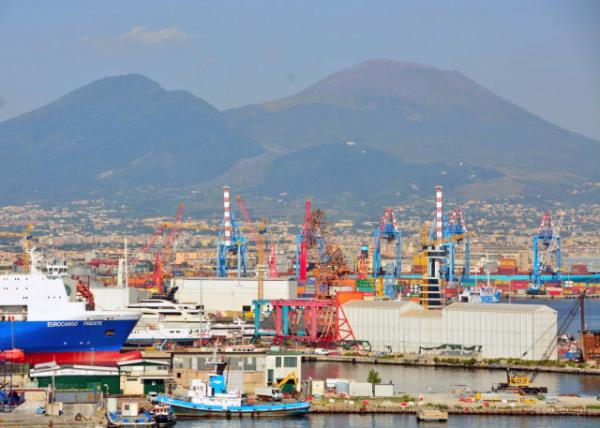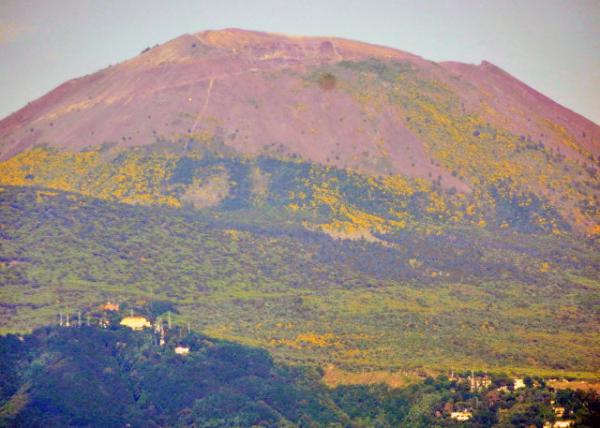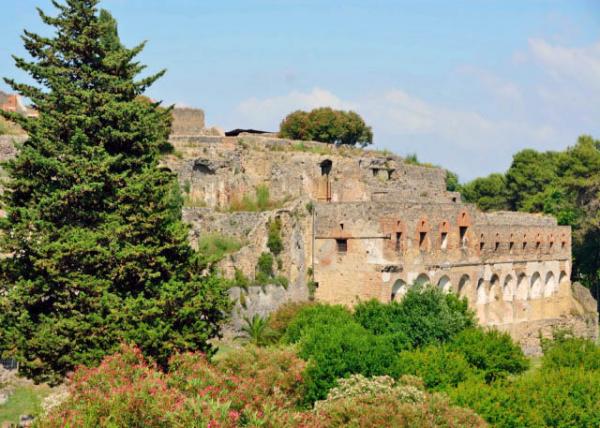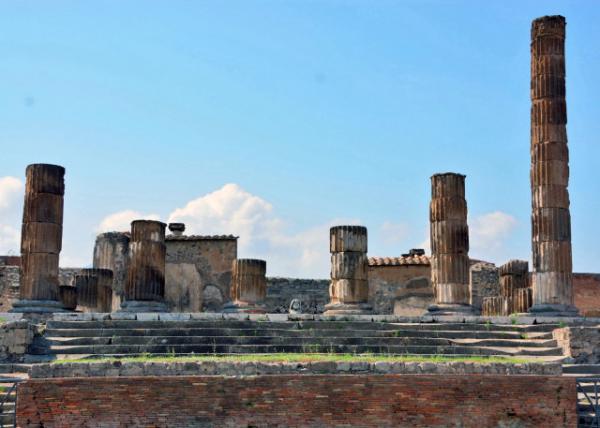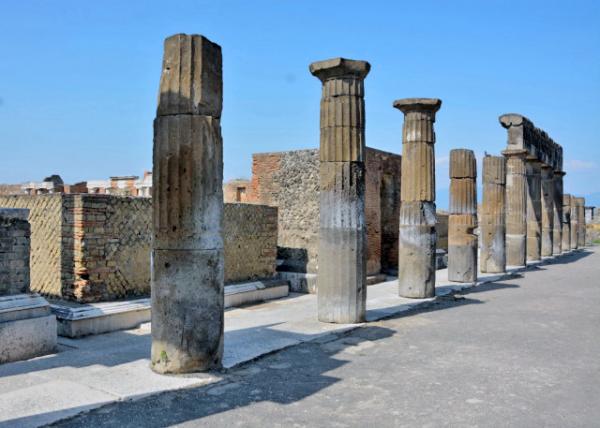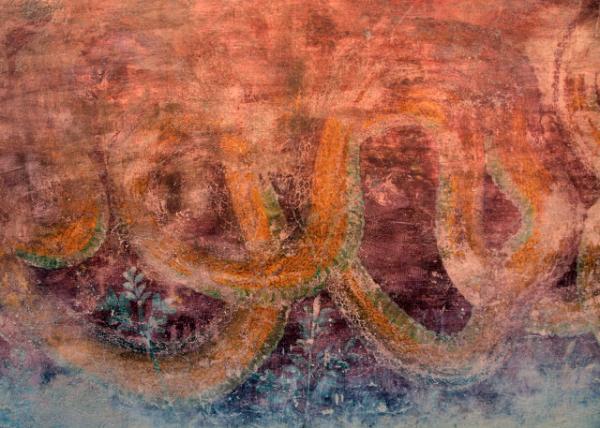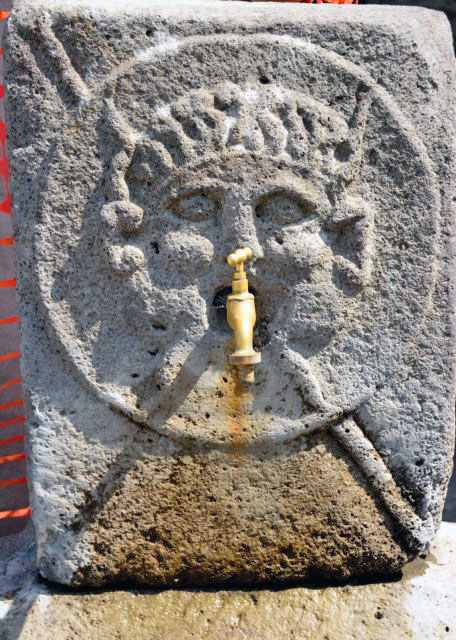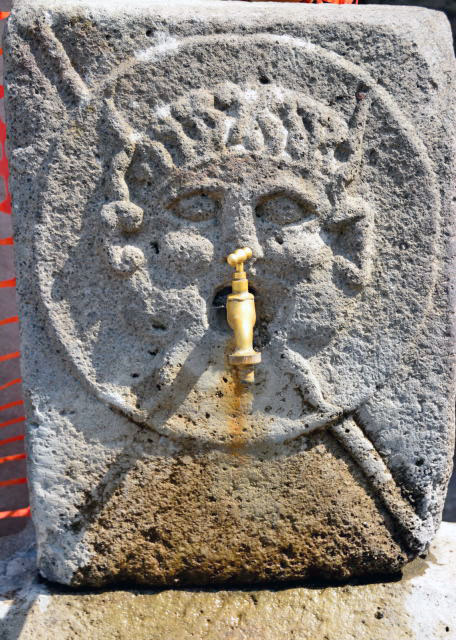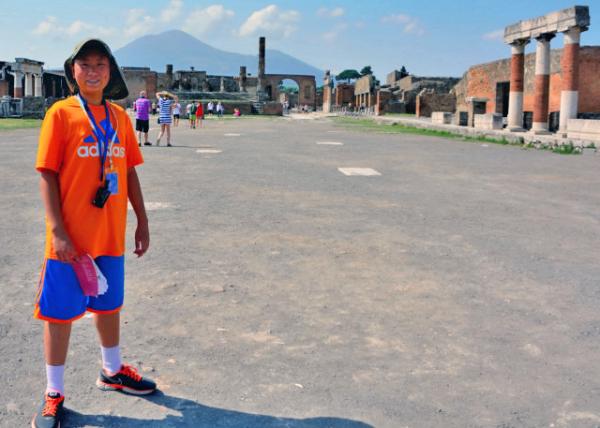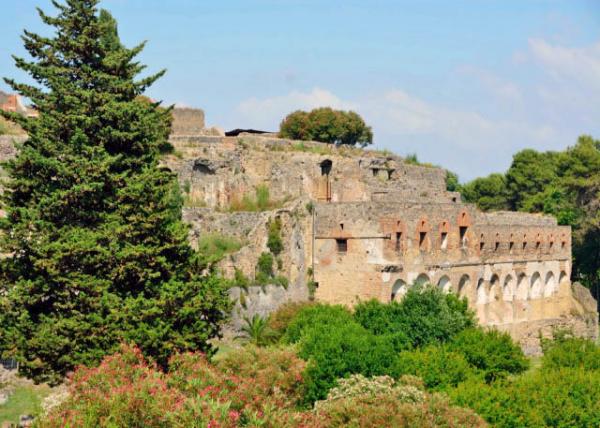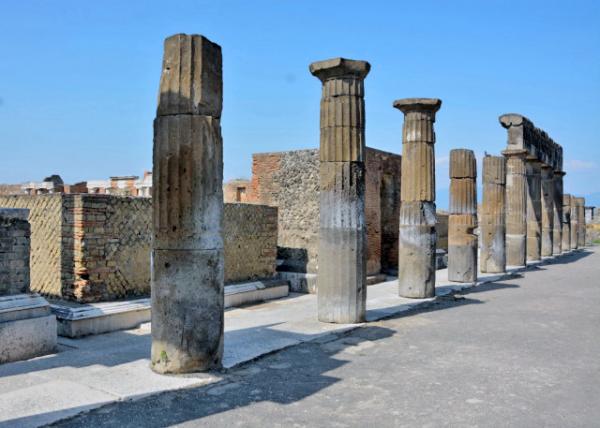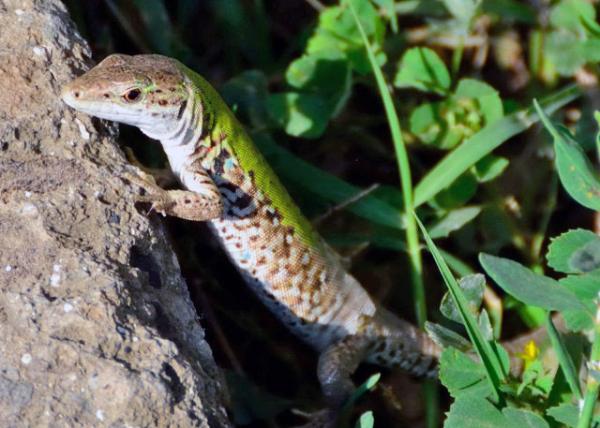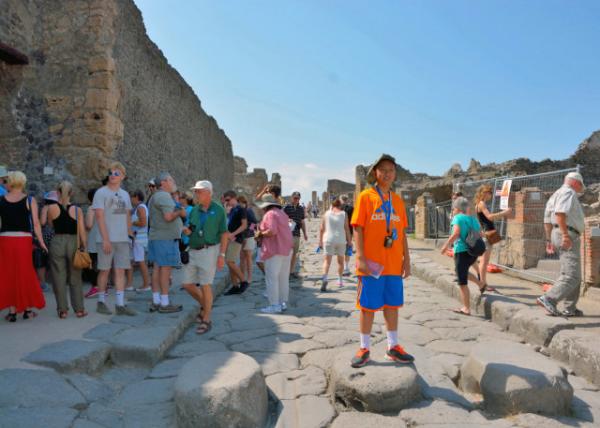| Archaeological Site of Pompeii, Italy(意大利龐貝古城) |
| 送交者: 天邊的紅霞 2020年04月27日08:33:07 於 [五 味 齋] 發送悄悄話 |
|
2015-06-14
【Aiden in English】 It doesn’t seem as if you wake up in the morning some random day to be covered in a sheet of burning ash. If you know what I mean, I’m talking about Pompeii of Italy, and reacquainting myself with the timeless power of nature. It was so tragic that the eruption of Mt. Vesuvius took place in 79 AD and completely buried the entire city. Pompeii was a thriving Roman city that was well-known as a vacation getaway for Rome’s beau monde and had tech far more advanced at the time. There were hundreds of houses and a strong social class system. Powerful rulers made a vigorous civilization. The population was shooting up and out of the charts. Fresh water was available, and resources were plentiful. They became the first to create a system of water drainage pipes under the city, acting as a sewage disposal system for the dirty water on the stone-paved streets. They understood the factors of sound, building an amphitheater that amplified the voice of the speaker. Of course, all things had to be destroyed. But Pompeii wasn’t conquered by armies, fallen into the Dark Ages with a weak ruler. They were leveled by Mt. Vesuvius. If the people of Pompeii were to point fingers, then blame the founders of the city for picking a spot 10 miles/16 km from an active volcano! There was nothing that could stop it either. What’s interesting is that the people weren’t killed by lava, but the ash. The burning flakes fell from the sky like rain, and people were covered upon a large sheet of it. The cloud of gas that was released from the volcano also made the air not breathable. As we proceeded into the ancient city, the guide explained that the upper part of the city was a reconstruct. The ash had burned away the top, and archeologists rebuilt it from clues of the remains. The scientists were also able to create a few statues of the dying people. How, you may ask, did they get them? Well, science today allows us to inflate the corpses into regular size. One person was covering his mouth trying to block out the gas. There wasn’t anything anyone could do. It seems like going to the beach for a week, and a hurricane kills you. Pompeii was that situation. Nature just decided at a certain time at a certain place to say: “Hey! I don’t like the clothes these people are wearing! Let’s make the volcano erupt and kill them!” Or something like this “I feel like destroying something today. Eeny-meeny-miny-moe! Pompeii it is!” Pompeii had no chance to survive. Life was just meant to be this way. Everything that starts has an ending. For Pompeii, it was just a little earlier. The people were thriving, and if it wasn’t for a particularly active and destructive volcano, there would be an enormous city built there today for all we know. It’s just that the finish line appeared closer than it seemed. 【紅霞譯文】 沒準哪天清早醒來,周圍所有一切全部煙灰餘燼,倘若你稍有靈犀,即刻便會領悟到我所指的是意大利龐貝城,它讓我重新認識自然界永恆的力量,公元七九年間維蘇威火山的爆發給整個地區帶來了滅頂之災。 龐貝曾經紅極一時,是古羅馬帝王將相權貴階層的度假勝地,擁有先進的技術工藝,城區廣廈萬間,社會等級森嚴,集權統治者積極推行文明建設,人口數量超大幅度地增長;城中建有自來水系統,物產資源豐富,不僅成為全球開發市區地下水管系統及石街污水排放體系的先驅,而且還掌握傳聲要素,挑頭發展環形露天劇場天然揚聲器的功效。當然,所有成就終究付之一炬,不過龐貝不是因黑暗時期庸君無能被軍變顛覆,而是葬身於維蘇威火山之下。如果後人對之心存不滿,那麼就把矛頭指向其祖先好了,誰叫他們把古城建在距離活火山十英里即十六公里的地方!即使再有回天之力,也休想阻擋火山爆發。有趣的是,當地人並非喪命於滾滾熔岩,相反卻被從天而降的煙灰粉片活埋窒息,火山釋放的氣流令人無法呼吸。 我們一邊參觀古城,一邊聆聽導遊解說。龐貝上城現為修復區,考古學家根據粉塵之下的遺物推理而建,科學工作者依照殭屍姿勢塑造了幾個模型,你也許會問,他們怎麼知道?是這麼回事,如今科學發展到可以幫我們把屍體整合至原有形貌大小,其中有的人正用手捂着嘴巴防止異味進入口中。天災人禍世事難料,好比去海邊度假一周,颶風會將你置於死地,龐貝恰巧如此。大自然隨時隨地掰活:“嘿!我不喜歡人類這身打扮!讓火山給他們點顏色瞧瞧!”或者換種口吻任性:“今天我想折騰一下,不是它就是它!來吧,龐貝!”龐貝無處躲無處藏,命中注定。 凡事有始有終。對於龐貝而言,滅亡來的稍微早了一點,人們正躊躇滿志,要不是趕上特別活躍並且極富殺傷力的火山發威,大家都認為龐貝定會大放異彩,可惜好景不長。
|
|
|
|
|
 |
 |
| 實用資訊 | |
|
|
|
|
| 一周點擊熱帖 | 更多>> |
|
|
|
| 一周回復熱帖 |
|
|
|
|
| 歷史上的今天:回復熱帖 |
| 2019: | 第三隻眼睛看一帶一路 | |
| 2019: | 首頁劉強東一地雞毛的文章,證明我當時 | |
| 2018: | 醒獅| 契約精神vs小聰明 | |
| 2018: | 毛粉團北韓出車禍,家屬咋一聲沒吭尼? | |
| 2017: | 秋念11:西化,將是中華民族最深重的災 | |
| 2017: | 專家們評估川普新稅收計劃(譯文) | |
| 2016: | 隨着床鋪不斷接近黨內提名,媒體也似乎 | |
| 2016: | BBC: 吳弘達遇意外去世終年79歲 | |
| 2015: | 看了阿巫下面貼的那條假新聞,想起微信 | |
| 2015: | 哈哈。這些上海丐幫車模倒是挺可愛的。 | |




